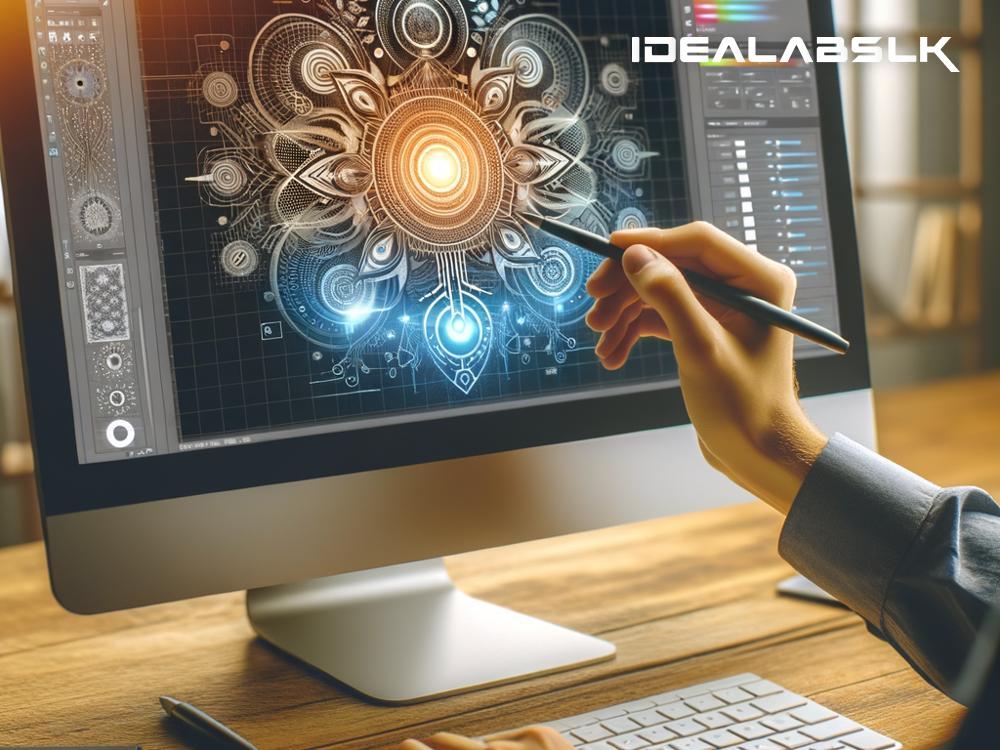AI in Graphic Design: Automating Creativity
In the ever-evolving landscape of technology, a new artist is emerging, one that doesn't hold a brush or a pen but operates in lines of code. Artificial intelligence (AI) is stepping into the realm of creativity, particularly within the field of graphic design, revolutionizing the way we conceive and execute our visual ideas. This digital renaissance is not about replacing human creativity but rather automating and enhancing the creative process in ways we've only begun to explore.
AI: The New Designer on The Block
AI in graphic design isn't about a robot sitting at a desk, sketching out ideas. It's about sophisticated software learning from an extensive database of images and designs, then applying this knowledge to create or assist in creating visuals. These AI systems can analyze trends, styles, and the essence of what makes a design appealing, then replicate or innovate on these foundations.
Breaking Down the Creative Process
At its core, graphic design is about solving problems in an aesthetically pleasing way. Whether it's a website layout, a company logo, or marketing materials, each project has its unique challenges. Traditionally, a graphic designer would tackle these challenges through a combination of creativity, experience, and iterative revisions. Now, AI offers a new toolkit for these challenges.
-
Idea Generation: Sometimes, the hardest part of design is starting with a blank canvas. AI can generate concepts and layouts at an astonishing speed, providing a smorgasbord of ideas based on given parameters. These ideas can serve as inspiration, a starting point, or even a final product, depending on the designer's needs.
-
Design Refinement: AI algorithms can offer suggestions for color palettes, typography, and composition, refining the rough edges of a designer's initial ideas. This step can significantly speed up the design process, allowing designers to experiment with more variations in less time.
-
Customization at Scale: Tailoring designs for different formats, platforms, or languages can be a time-consuming task. AI can automate this adaptation, ensuring consistency across various media without the manual labor traditionally required.
The Benefits: Speed, Innovation, and Personalization
The infusion of AI into graphic design brings notable advantages. The speed at which AI can generate and adapt designs is unparalleled, turning what used to take hours into minutes. This allows designers to focus more on the creative and strategic aspects of their work, rather than getting bogged down by the technicalities.
Innovation is another significant benefit. By analyzing vast datasets, AI can identify and synthesize trends and patterns that may not be immediately obvious, offering fresh perspectives and solutions. Furthermore, AI can personalize designs to an extent previously unimaginable, creating variations tailored to individual preferences or demographic segments.
Overcoming Fears: The Human Touch Remains Irreplaceable
Despite these advantages, there's a fair share of apprehension surrounding AI in creative fields. The fear that AI will replace human designers is a common concern, but it overlooks the intrinsic value of human creativity. AI lacks the emotional depth, cultural context, and lived experiences that human designers bring to their work. It's a tool, not a replacement.
The collaboration between AI and designers can lead to a harmonious blend of efficiency and creativity. By automating the routine aspects of design, AI frees up human designers to explore more complex, meaningful, and nuanced aspects of their work.
Looking Ahead: The Future of Design with AI
As we look to the future, AI in graphic design holds immense potential. Its capabilities will continue to grow, offering even more sophisticated tools for creation, customization, and analysis. This doesn't herald the end of human-led design but the beginning of a new chapter in which designers can achieve more with their creative visions than ever before.
The role of the graphic designer is evolving, not diminishing. Designers who embrace AI as part of their toolkit can elevate their work, pushing boundaries and exploring new territories in the vast landscape of visual communication.
In conclusion, AI in graphic design is automating creativity, but it's also doing something more profound. It's expanding the possibilities of what we can create, how we can create it, and who can participate in the act of creation. The blend of human creativity and artificial intelligence promises a future where our visual world is richer, more dynamic, and infinitely more personalized. As we stand on the brink of this new era, it's an exciting time to be a part of the creative community.

